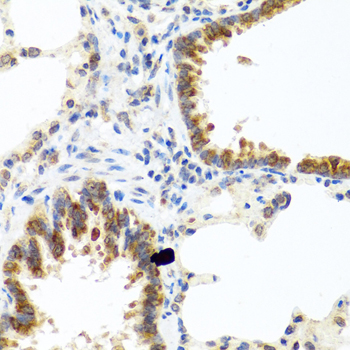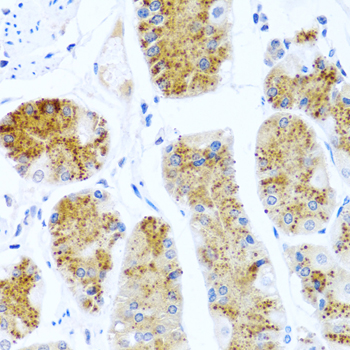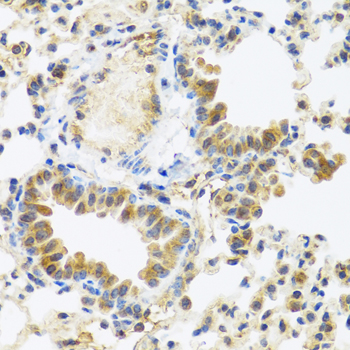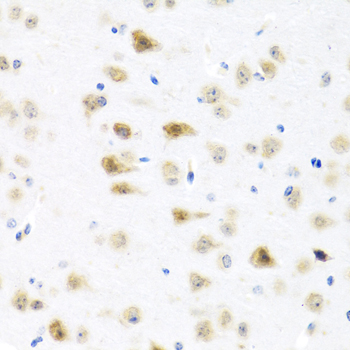-
Product Name
C8orf4 Polyclonal Antibody
- Documents
-
Description
Polyclonal antibody to C8orf4
-
Tested applications
WB, IHC
-
Species reactivity
Human, Mouse, Rat
-
Alternative names
C8orf4 antibody; TC-1 antibody; TC1 antibody; protein C8orf4 antibody
-
Isotype
Rabbit IgG
-
Preparation
Antigen: Recombinant fusion protein containing a sequence corresponding to amino acids 1-106 of human C8orf4 (NP_064515.1).
-
Clonality
Polyclonal
-
Formulation
PBS with 0.02% sodium azide, 50% glycerol, pH7.3.
-
Storage instructions
Store at -20℃. Avoid freeze / thaw cycles.
-
Applications
WB 1:500 - 1:2000
IHC 1:50 - 1:200 -
Validations

Immunohistochemistry - C8orf4 Polyclonal Antibody
Immunohistochemistry of paraffin-embedded rat lung using C8orf4 antibody at dilution of 1:100 (40x lens).

Immunohistochemistry - C8orf4 Polyclonal Antibody
Immunohistochemistry of paraffin-embedded human stomach using C8orf4 antibody at dilution of 1:100 (40x lens).

Immunohistochemistry - C8orf4 Polyclonal Antibody
Immunohistochemistry of paraffin-embedded mouse lung using C8orf4 antibody at dilution of 1:100 (40x lens).

Immunohistochemistry - C8orf4 Polyclonal Antibody
Immunohistochemistry of paraffin-embedded mouse brain using C8orf4 antibody at dilution of 1:100 (40x lens).
-
Background
Seems to be involved in the regulation of cell growth an differentiation, may play different and opposite roles depending on the tissue or cell type. May enhance the WNT-CTNNB1 pathway by relieving antagonistic activity of CBY1. Enhances the proliferation of follicular dendritic cells. Plays a role in the mitogen-activated MAPK2/3 signaling pathway, positively regulates G1-to-S-phase transition of the cell cycle. In endothelial cells, enhances key inflammatory mediators and inflammatory response through the modulation of NF-kappaB transcriptional regulatory activity. Involved in the regulation of heat shock response, seems to play a positive feedback with HSF1 to modulate heat-shock downstream gene expression. Plays a role in the regulation of hematopoiesis even if the mechanisms are unknown (By similarity). In cancers such as thyroid or lung cancer, it has been described as promoter of cell proliferation, G1-to-S-phase transition and inhibitor of apoptosis. However, it negatively regulates self-renewal of liver cancer cells via suppresion of NOTCH2 signaling.
Related Products / Services
Please note: All products are "FOR RESEARCH USE ONLY AND ARE NOT INTENDED FOR DIAGNOSTIC OR THERAPEUTIC USE"
